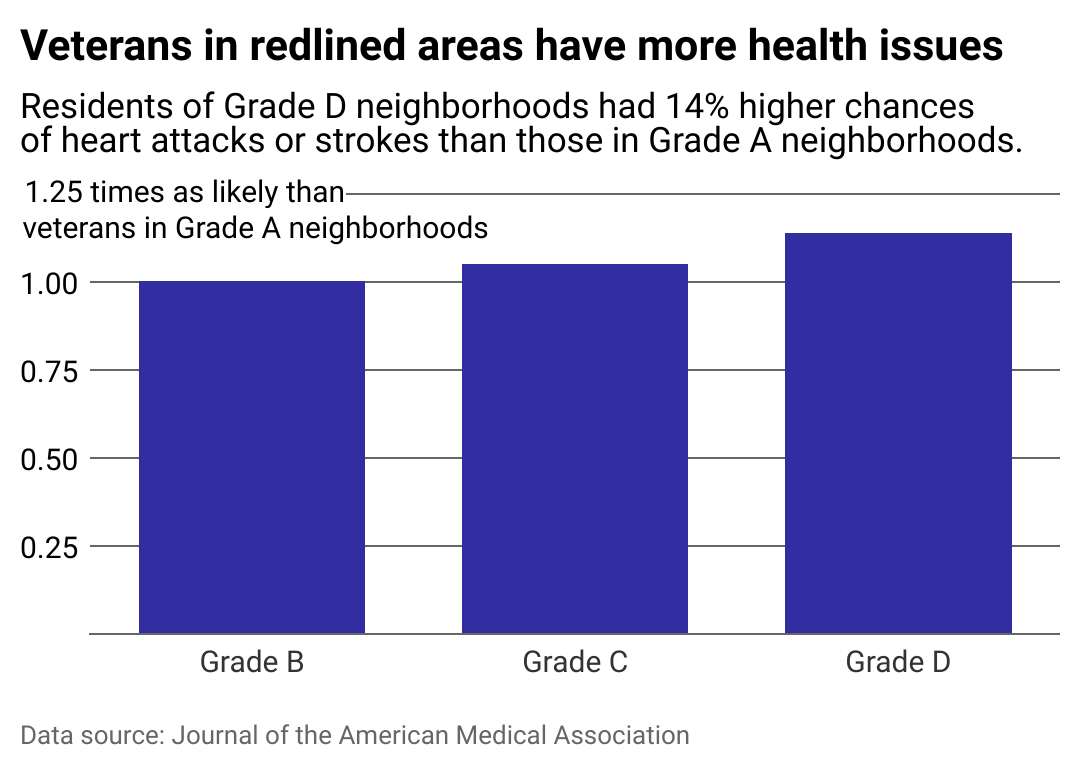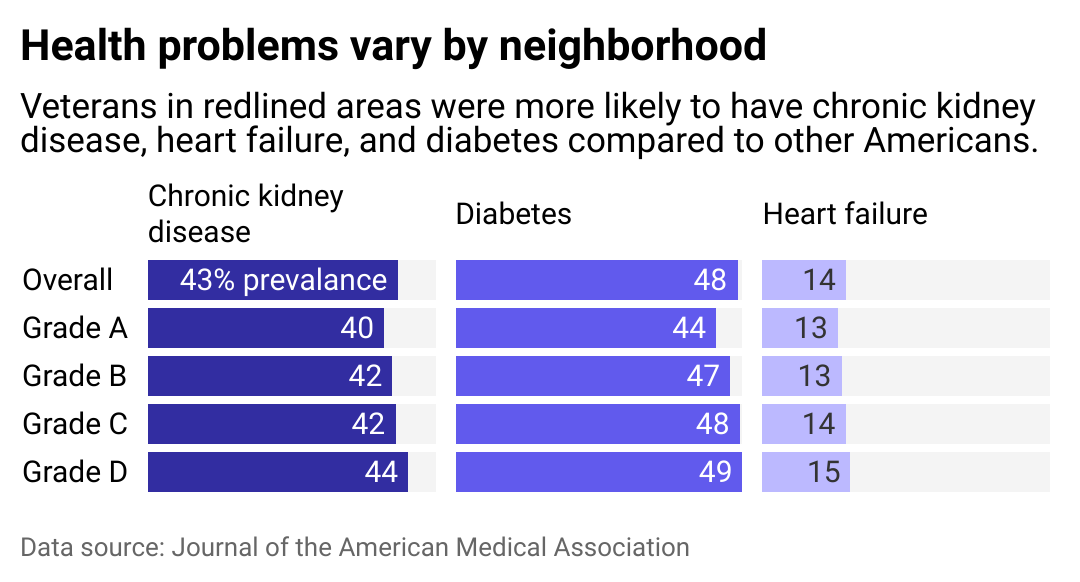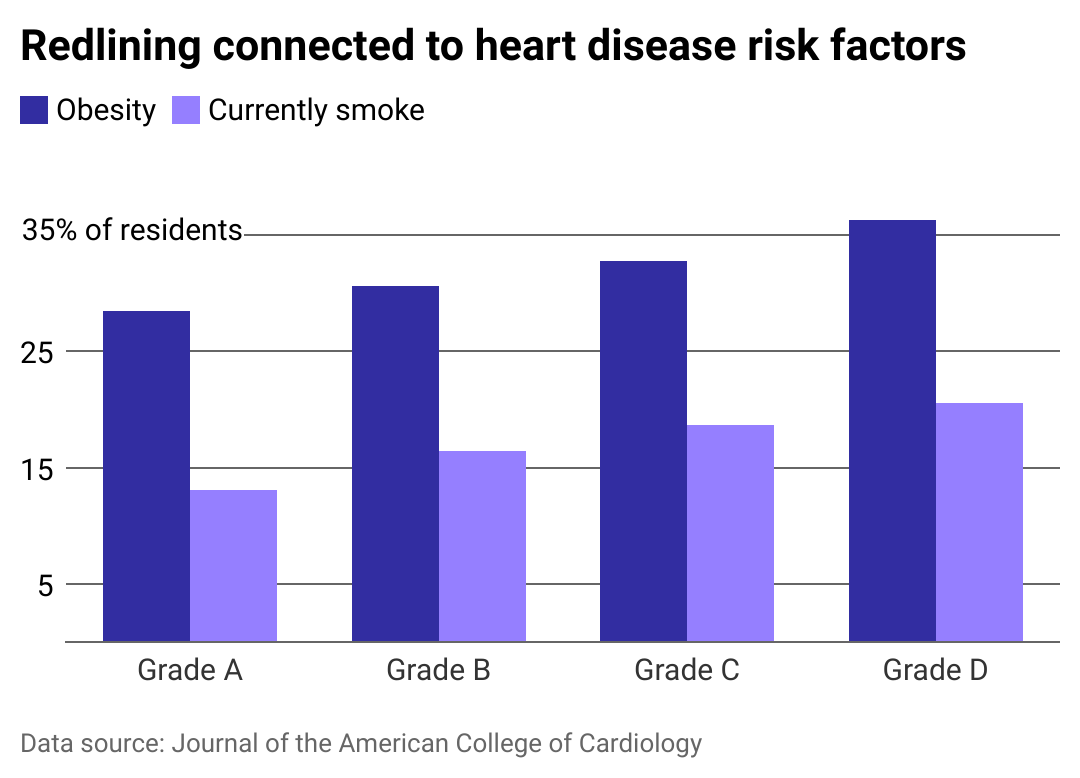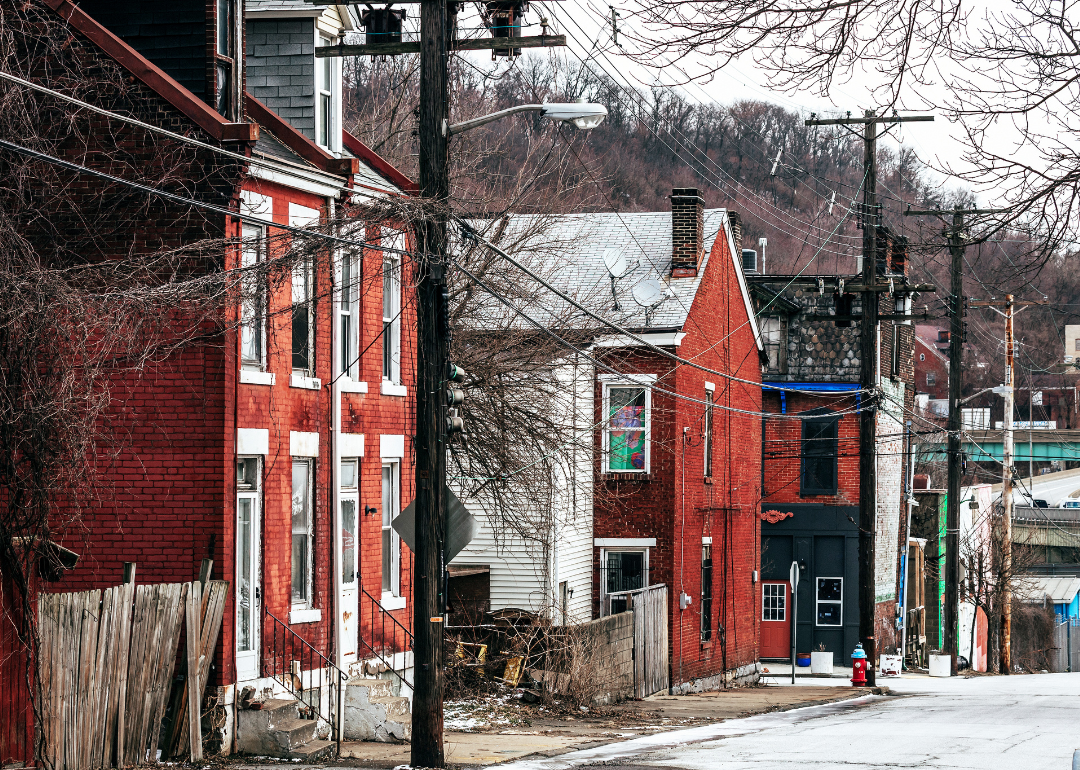This story originally appeared on Northwell Health and was produced and distributed in partnership with Stacker Studio.
How your address could determine your heart health
More than a half-century after federally sponsored segregation limited access to homeownership for Black Americans and contributed to the deterioration of redlined neighborhoods, communities are still feeling the impact.
Redlining, implemented by the federal government after the Great Depression, graded and color-coded streets based on their proximity to neighborhoods populated by Black people. The Federal Housing Authority decided that property values in these areas would only decline, making mortgage loans in those areas economically risky. It led to systemic disinvestment in these segregated neighborhoods, where residents were more likely to have health problems, including severe asthma.
Northwell Health partnered with Stacker to examine data from numerous government and academic studies that showed the health disparities among people who live in redlined neighborhoods.
A study published in the Journal of the American Medical Association in May 2023 found veterans living in redlined areas are 14% more likely to have a major heart attack or stroke than people living in higher-graded areas. The study tracked long-term health outcomes among veterans over a four-year period but was adjusted for demographic factors such as race and gender.
Even when comorbidities such as smoking and obesity are taken into account, the difference in health outcomes remained significant, researchers found. That's because these neighborhoods are more likely to be near landfills and other pollutants, while people who live there lack access to things like health care, fresh foods, and green space.
Lending discrimination in the U.S. still exists today, especially against Black and Latino people who want to buy a home. In 2021, the Biden administration announced a new initiative to stop the unofficial practice of redlining. Some local and state governments have also stepped up; in May 2023, New York's governor announced an eight-step plan to reduce housing inequality in that state.

Impacts of redlining practices remain
Not only are residents of lower-graded neighborhoods more likely to have heart problems, but they also have a 13% higher risk of death overall, according to the JAMA study.
Because they tend to have less access to health insurance and public transit, people in redlined neighborhoods are less likely to see a doctor. A decrease in wellness visits means health issues are typically caught later, and therefore may be more severe.
However, investing in these communities does not necessarily provide a cure-all for these issues. When a formerly redlined neighborhood becomes gentrified—such as by erecting a new grocery store or luxury apartments—residents are more likely to experience stress and anxiety from rising living costs and potential displacement, which can exacerbate physical health issues.

Chronic diseases are more common in redlined neighborhoods
Kidney diseases are one of the leading causes of death in the United States, according to the Centers for Disease Control and Prevention. When the kidneys cannot filter blood properly, waste remains in the body and can lead to other issues like heart disease and stroke. More than 37 million American adults have chronic kidney disease, but most don't know it.
Diabetes is also a risk factor for heart problems. People with diabetes are two times more likely to have a stroke or heart disease, according to the CDC.

How preexisting conditions play a role
People who live in redlined areas are more likely to deal with risk factors for heart diseases, including obesity and smoking, though that is largely by design.
Businesses that typically promote healthy living (such as grocery stores, pharmacies, and gyms) avoid leasing space in these neighborhoods, while reputedly predatory businesses (like check cashing stores, liquor stores, and smoke shops) proliferate. Because they are exposed to more tobacco marketing, children in redlined areas begin smoking sooner.
People of lower socioeconomic status are more likely to smoke tobacco products, according to a 2020 U.S. Surgeon General report. Smokers are more likely to have cancer, as well as heart and respiratory diseases.
The report also found quitting smoking is beneficial at any age and can improve health and reduce the risk of death. To increase the likelihood someone will quit smoking, it recommends comprehensive insurance that covers FDA-approved prescription drugs and counseling, along with anti-smoking media campaigns and raising the price of cigarettes.
Story editing by Ashleigh Graf. Copy editing by Tim Bruns.




